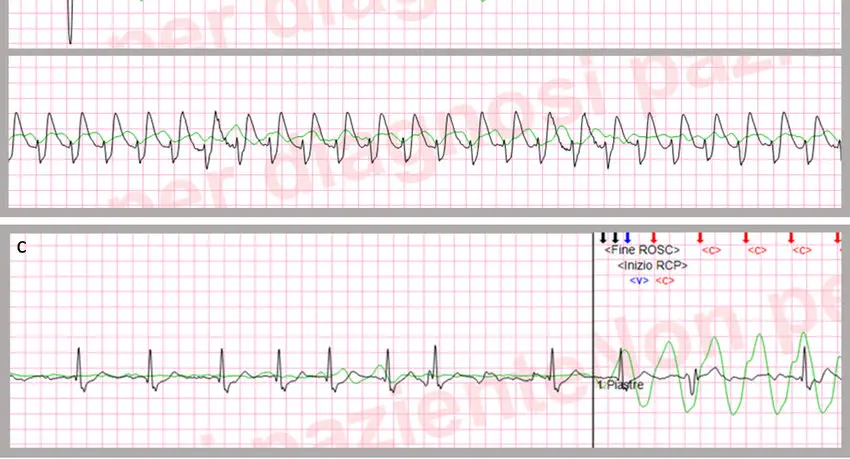Pulseless electrical activity is characterized by unresponsiveness and the lack of a palpable pulse in the presence of organized cardiac electrical activity.
What is the Pathology of Pulseless Electrical Activity?
The pathology of pulseless electrical activity is:
-Etiology: The cause of pulseless electrical activity is a profound cardiovascular insult, such as severe prolonged hypoxia or acidosis or extreme hypovolemia or flow-restricting pulmonary embolus.
-Pathogenesis: The sequence of events that lead to pulseless electrical activity is the initial insult that weakens cardiac contraction, is exacerbated by worsening acidosis, hypoxia, and increasing vagal tone, and leads to inadequate mechanical activity, despite the presence of electrical activity. A vicious cycle is created, causing a major cardiovascular, respiratory, or metabolic derangement that results in the inability of cardiac muscle to generate sufficient force in response to electrical depolarization.
-Morphology: The morphology associated with pulseless electrical activity shows cardiac sarcomeres which length is unattainable causing decreased venous return to the left atrium and the left ventricle is unable to generate sufficient pressure to overcome its afterload.
How does Pulseless Electrical Activity Present?
Patients with pulseless electrical activity are typically elderly females. The symptoms, features, and clinical findings associated with pulseless electrical activity include tension pneumothorax and auto ̶ positive end-expiratory pressure (PEEP), myocardial dysfunction, hyperkalemia, hypothermia.
How is Pulseless Electrical Activity Diagnosed?
Pulseless electrical activity is diagnosed with measuring a core temperature, QRS duration, tests of values for arterial blood gases (ABGs), and serum electrolyte levels that may provide information regarding serum pH, oxygenation, serum potassium concentration, and glucose evaluation.
How is Pulseless Electrical Activity Treated?
Pulseless electrical activity is treated with needle decompression of pneumothorax, pericardiocentesis for tamponade, volume infusion, correction of body temperature, administration of thrombolytics, or surgical embolectomy.
What is the Prognosis of Pulseless Electrical Activity?
The prognosis of pulseless electrical activity is poor unless a rapidly reversible cause is identified and corrected. The electrocardiographic (ECG) characteristics are related to the patient’s prognosis and the more abnormal the ECG characteristics, the less likely the patient is to recover from PEA.



